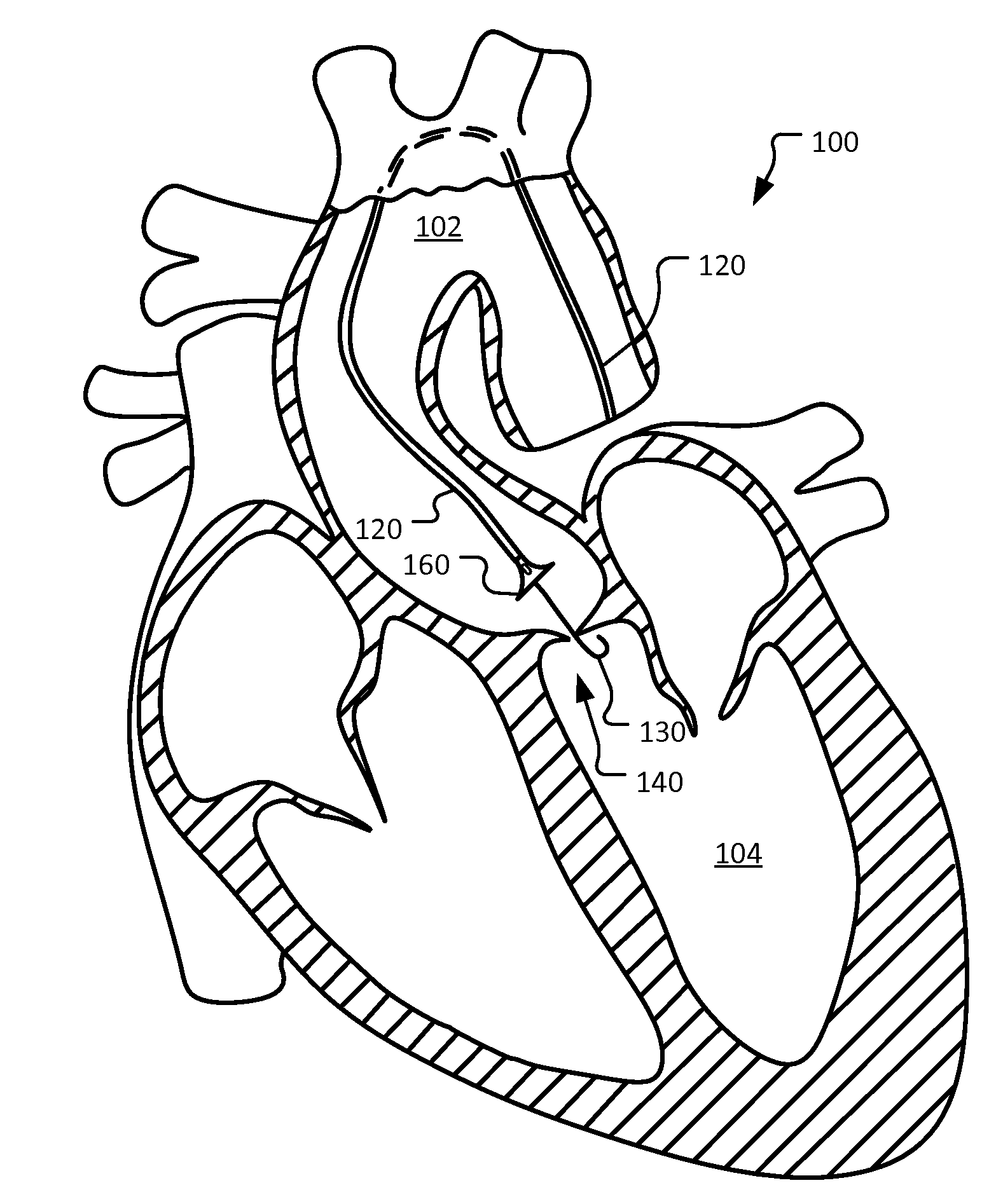Device and methods for self-centering a guide catheter
a guide catheter and self-centering technology, which is applied in the direction of catheters, guide wires, heart valves, etc., can solve the problems of reduced cardiac output and impairment of heart function, severe shortness of breath, and difficulty in breathing, so as to reduce radiation exposure for patients and physicians, save time and expense, and reduce the risk of thromboembolic stroke
- Summary
- Abstract
- Description
- Claims
- Application Information
AI Technical Summary
Benefits of technology
Problems solved by technology
Method used
Image
Examples
Embodiment Construction
[0029]This document provides devices and methods for the treatment of heart conditions such as valvular stenosis. For example, this document provides devices and methods by which a guide catheter can align itself with a blood flow stream to thereby help direct a guidewire or other elongate device transmitted from the guide catheter through an orifice of a heart valve.
[0030]One of the most challenging steps when performing a TAVR, valvuloplasty, or hemodynamic study on a stenotic valve is to find the valve orifice and pass a guidewire, catheter, or other elongate medical device through the stenotic valve, against the direction of high velocity blood flow. The current practice involves random probing of the stenotic valve with the guide wire until the orifice is penetrated.
[0031]With reference to FIG. 1, a schematic diagram is provided of human heart 100 shown in partial cross-section undergoing a catheterization using a guide catheter 120. Guide catheter 120 is depicted in aortic arc...
PUM
 Login to View More
Login to View More Abstract
Description
Claims
Application Information
 Login to View More
Login to View More - R&D
- Intellectual Property
- Life Sciences
- Materials
- Tech Scout
- Unparalleled Data Quality
- Higher Quality Content
- 60% Fewer Hallucinations
Browse by: Latest US Patents, China's latest patents, Technical Efficacy Thesaurus, Application Domain, Technology Topic, Popular Technical Reports.
© 2025 PatSnap. All rights reserved.Legal|Privacy policy|Modern Slavery Act Transparency Statement|Sitemap|About US| Contact US: help@patsnap.com



